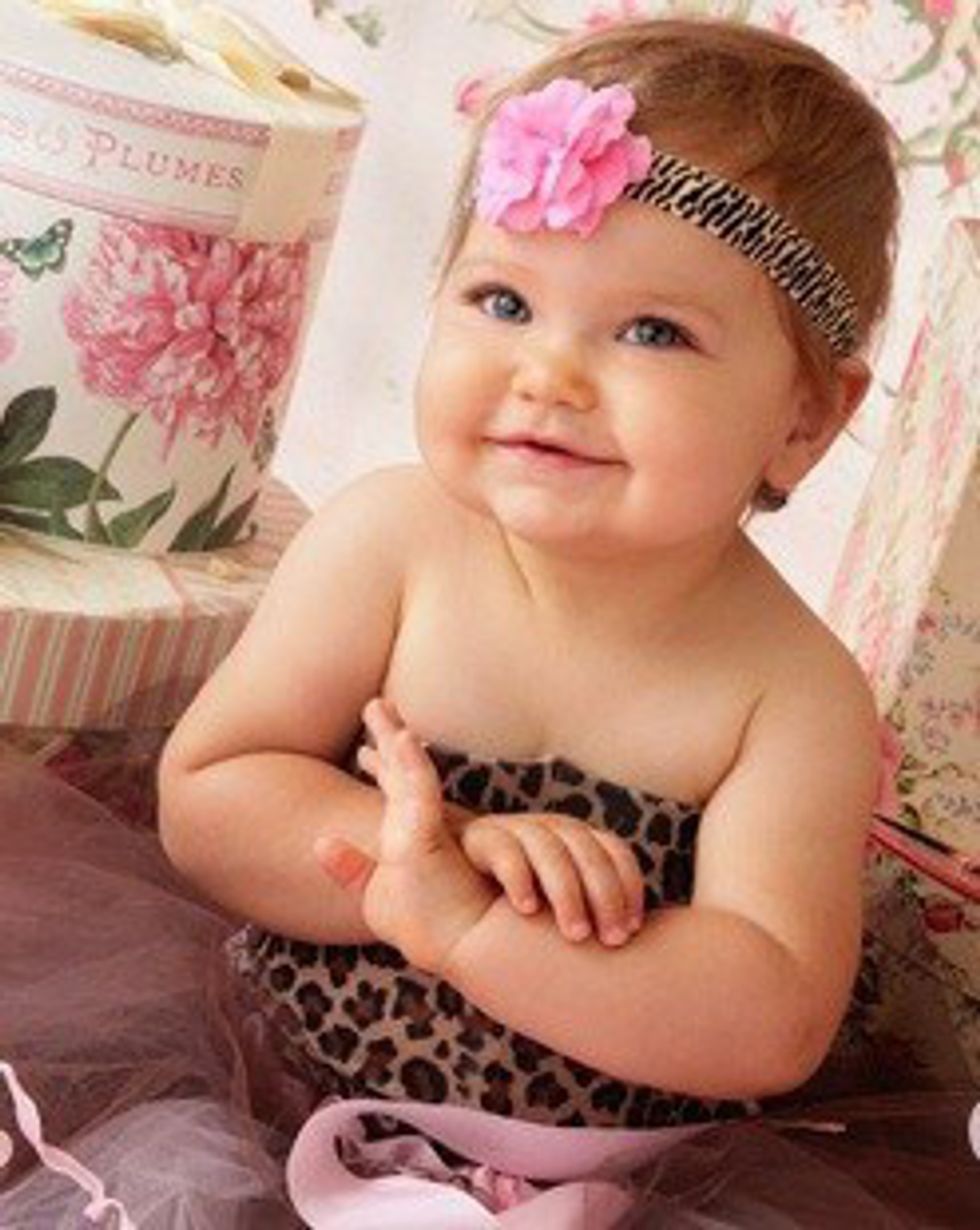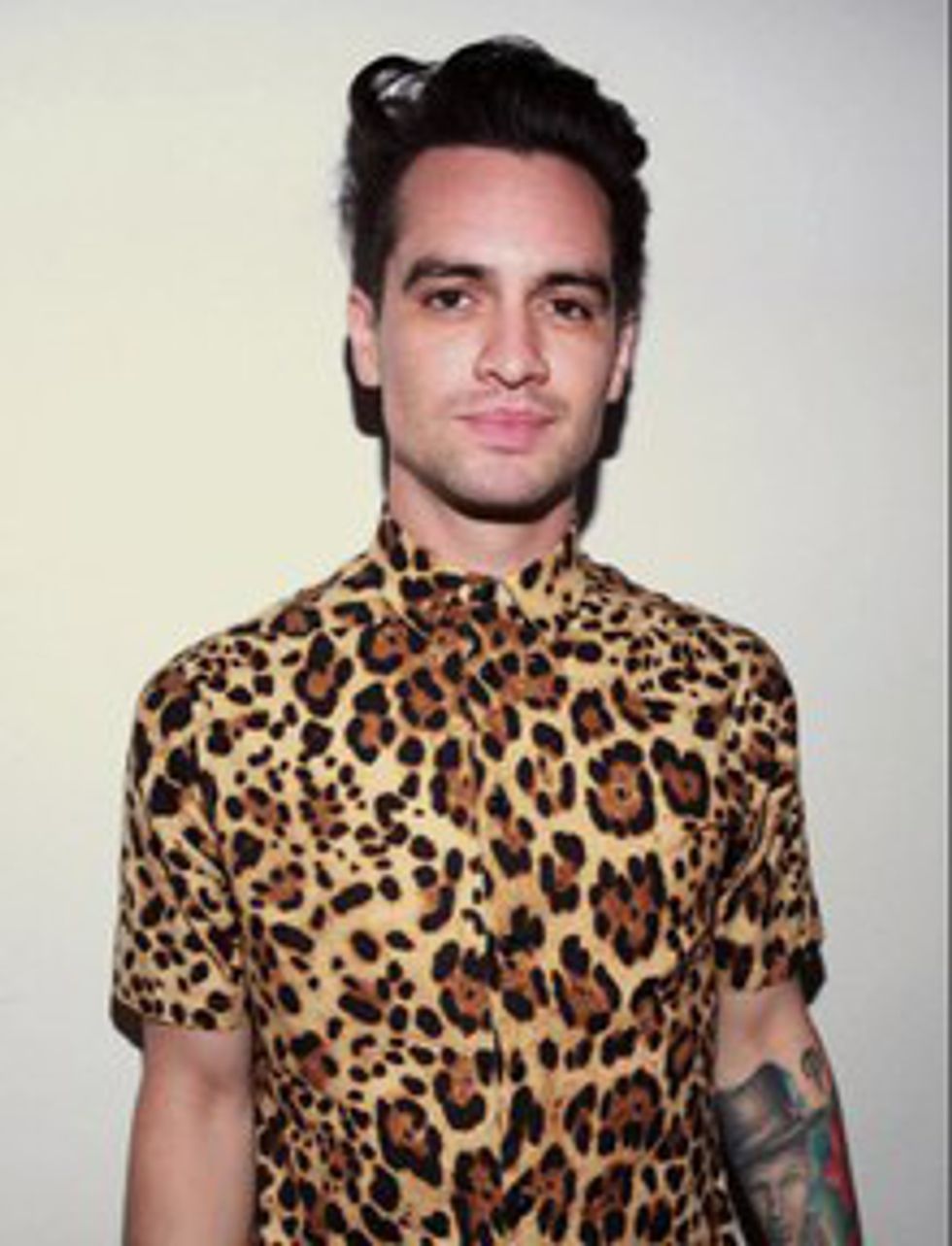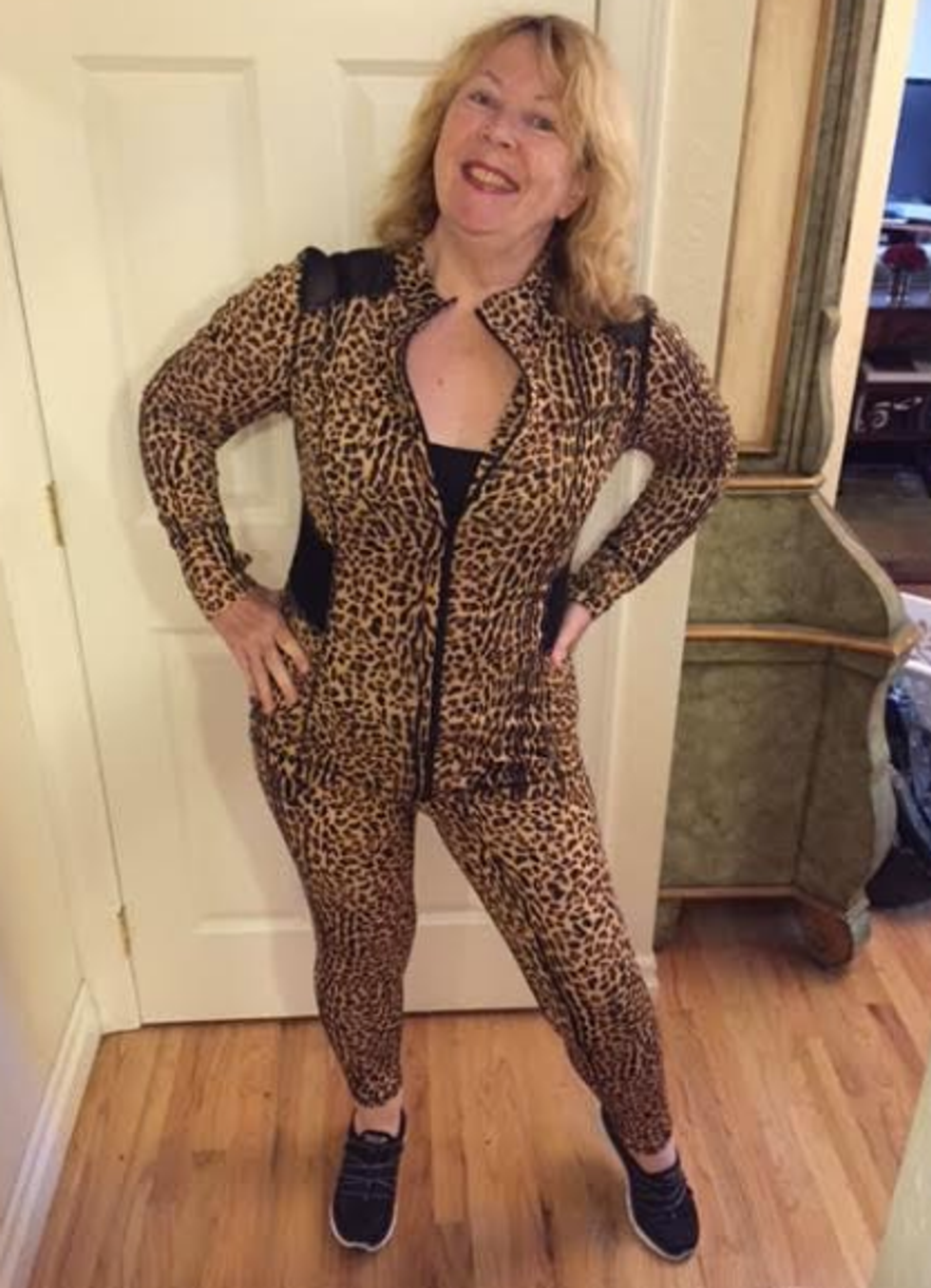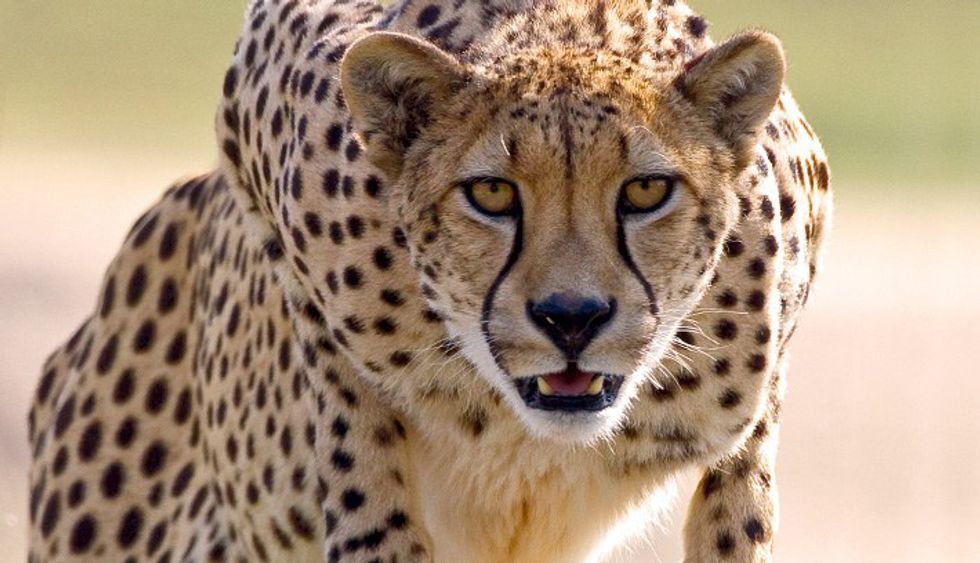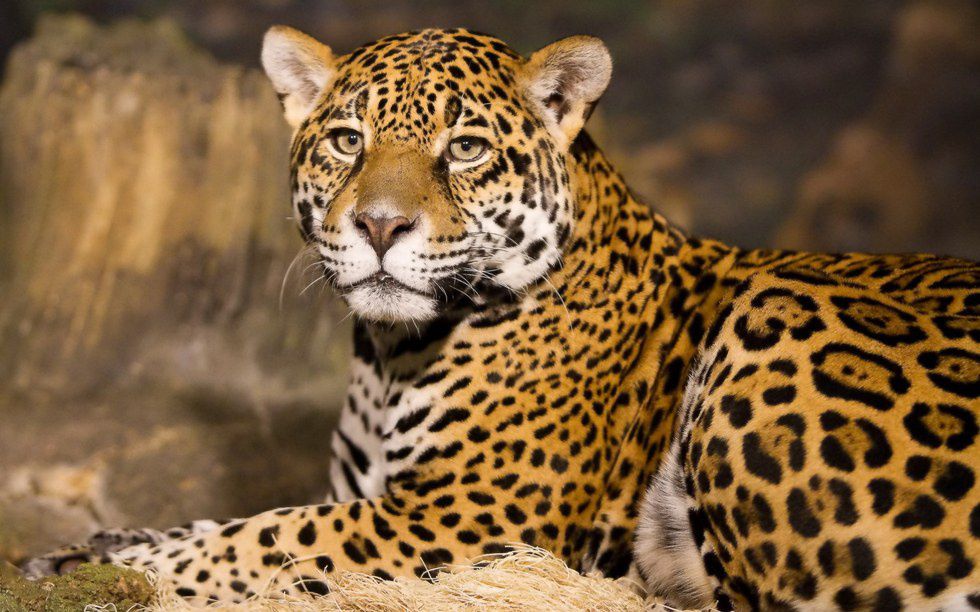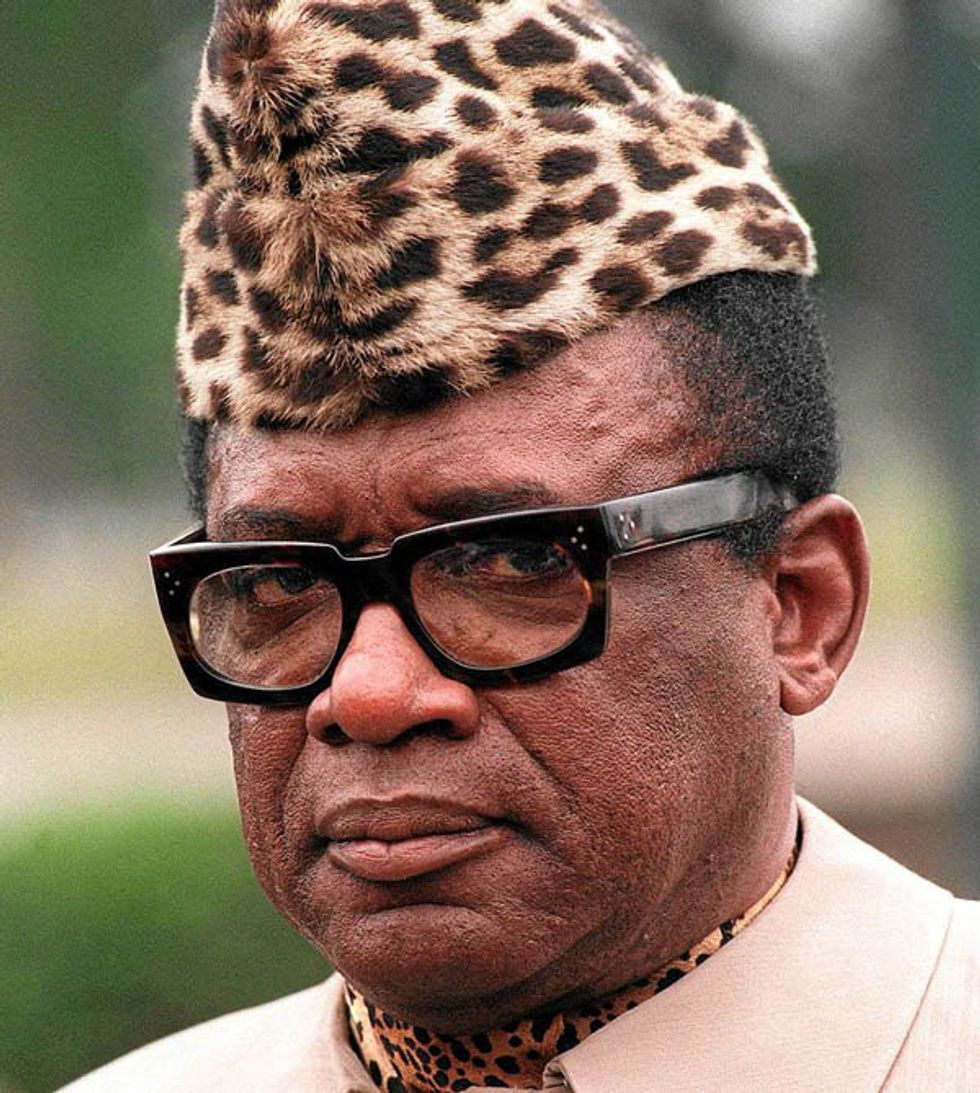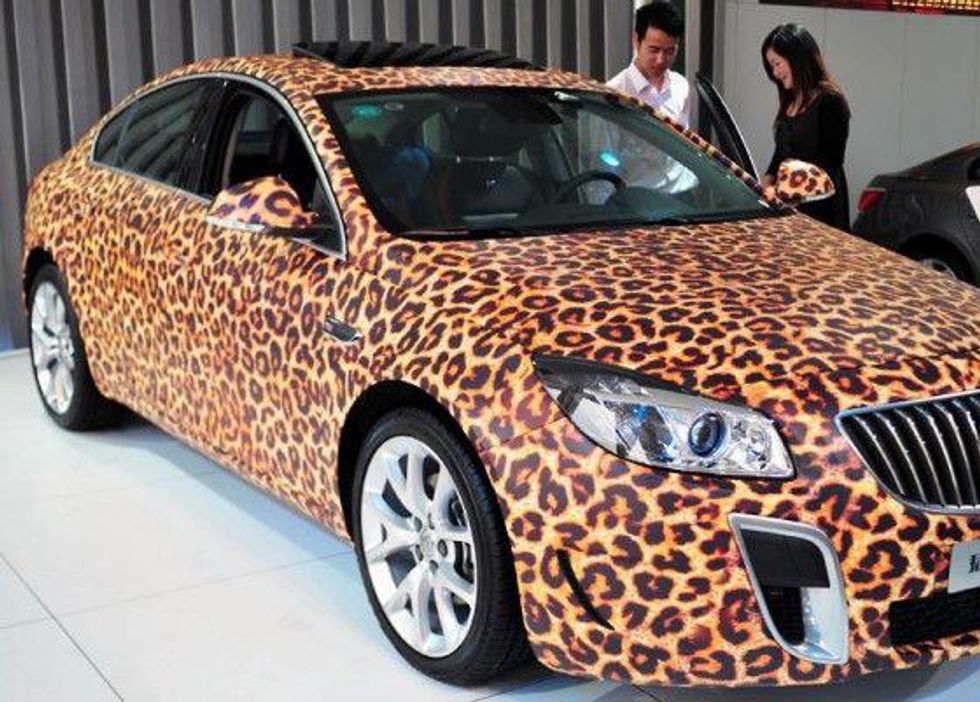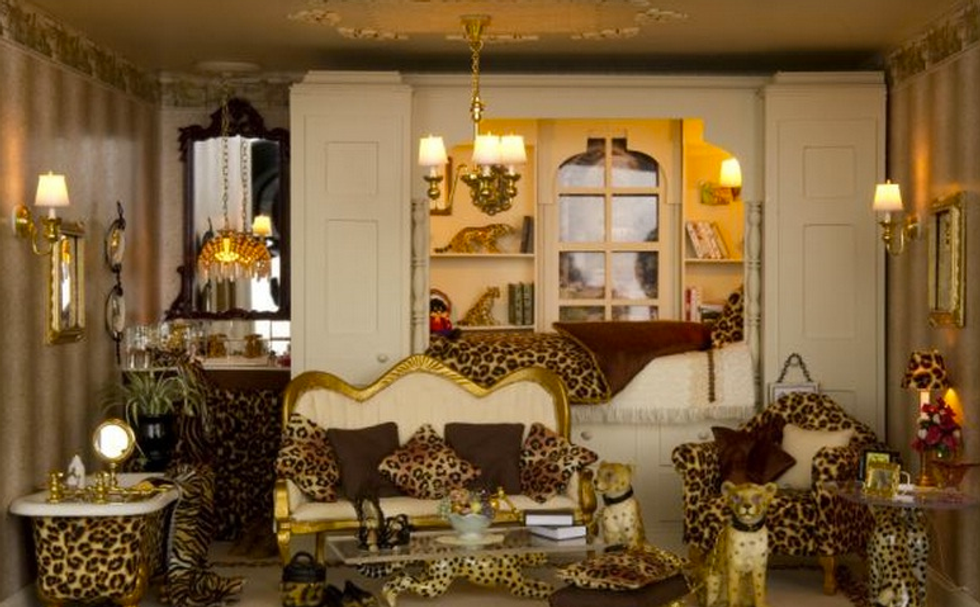What do your baby cousin
Recommended for you
Panic! At The Disco's frontman
and your grandma all have in common?
They love Leopard print.
The question is, why do we love this animal print so much? Sure, there are tons of other fashion trends and styles that hit the racks every season. Yet, no matter how the haute couture wheels turn, we can't seem to turn our eyes away from this eye- catching pattern. For all those who have been on the feline fashion train since day one, and for those who may still think it's too gaudy, too loud, or too much, here are all the interesting tidbits I think you need to develop a basic understanding of why we have loved it throughout history, as well as offer some insight as to what it means to love leopard print.
Cheetahs and leopards are not the same animal, and neither are their prints.
Cheetahs are shaped so differently from other wild cats that they are their own genus. They have a rangy greyhound-like thinner body frame with deep chest and narrow waist. They have solid, round, polka-type black spots measuring 2 to 3 cm (0.79 to 1.2 in) across. These spots are not “rosettes” like those of leopards. There are no spots on their white underside, but the tail, which usually ends in a bushy white tuft, does have spots that merge to form four to six dark rings at the end. Cheetahs have a small head in proportion to their bodies to streamline their running. Eyes are set high on the skull. They have black “tear lines” running from the corner of their both eyes down the sides of the nose to their mouth.
While Cheetahs have evenly spread simple spots, leopards normally have small, round rosettes. In addition to this leopards are larger and much more muscular as compared to cheetahs, but slightly smaller and more lightly built. Apart from the size leopards also show a great diversity in physical appearance, particularly because of the large variation in color coat and rosette patterns. Its rosettes are circular in East Africa but tend to be a bit squarer in southern Africa and larger in Asian populations. Yellow coat tends to be paler and cream colored in desert populations, more gray in colder habitats, and of a darker golden shade in rainforests. Overall, the fur under the belly tends to be lighter in color and of a softer, downy type. Solid black spots in place of open rosettes are generally seen along the face, limbs and underbelly.
Check your tags.
Most store labels refer to what is really leopard print as "cheetah print." The squiggly rosettes are what most people who love this animal print look for. You'll see the actual spotty cheetah print labeled properly on clothes and accessories from time to time, but more often than not, you'll be paying for "cheetah print" when what you're really on the hunt for is leopard print.
The underlying message of “I will be seen, and I am not prey.”
The New York Times recently published an article entitled Dressed To Kill: The Power Of Leopard Prints, in which burlesque performance expert Jo Weldon discusses why people wear clothes made of leopard patterns. She notes how for centuries, spotted-cat motifs have been used to "attract attention and exude power, ferocity, independence, sophistication, sensuality and sometimes outright debauchery."
For those of us who may have issues with personal confidence and self- esteem, wearing leopard print sends a wordless message of power. For some, confidence is a skill to be worked on, while others use the print to compliment their own prowess. Whether you're timid or outspoken, leopard print is an easy way to grab and capture attention.
Weldon herself "has studied how leopard skins and printed versions of the pelts have appealed to Egyptian queens, Jacqueline Kennedy, the pinup model Bettie Page and the performers Eartha Kitt, Carmen Miranda, Ann-Margret and Dolores del Río." She notes that of individuals she interviews on wearing the pattern, "they had not understood their feelings of empowerment until they heard about the history and significance of their clothes."
The historical and cultural context of leopard print continues, explaining how "famous men have been drawn to the patterns, too, including the fashion designers Oleg Cassini and Christian Dior," to name a few. It has been historically claimed that during the terror of Europe in 1815 under Napoleon I, troops trimmed their helmets and saddle covers in leopard skin. Circus strongmen and actors playing Tarzan or cave dwellers have typically sported skimpy leopard garments. Mobutu Sese Seko, the longtime dictator of Zaire (now the Democratic Republic of Congo), had a signature leopard-skin hat.
Modeled after furry friends, not bred for fashion trends.
The burlesque star's research, which was later showcased as part of a lecture in May of 2016 at the Morbid Anatomy Museum alongside Weldon's own animal print collection, serves to justify and re- establish the cultural, emotional, and historical significance of the often bashed print. Despite the fact that many high profile political figures and celebrities use and sport real leopard pelts, I also want to take a moment to advocate against doing so.
Of the nine subspecies officially recognized by the International Union for Conservation of Nature, and as many as 27 subspecies being researched via advanced DNA testing, both the Amur Leopard and Snow Leopard are listed as endangered via the World Wildlife Fund. The Amur Leopard, claimed to be the "world's rarest cat," is critically endangered to the point of extinction due in part to being "poached largely for its beautiful, spotted fur."
In truth, excessive displays of wealth in the name of fashion can be done without harming animals that, based upon our personal code of ethics(and our heart strings), we wish to keep safe and preserve the wildlife of. If we really love leopard print, then we must love the leopards themselves enough to keep them around so that we can continue emulating their patterns and putting them on goods from purses to cars.
EVERYTHING comes in leopard print.
So, whether you're a leopard print newbie still trying to differentiate your spots or a wildlife veteran, you now know that the pattern you sport and how you sport it says much more about you, and the history of mankind, than you think. The "power" unleashed by the skin of a leopard is one that can bring about good, but also dangerous political, social, and environmental results. Know you "furs," and wear them wisely.
Except "Leopard Girls" just wasn't catchy enough...




